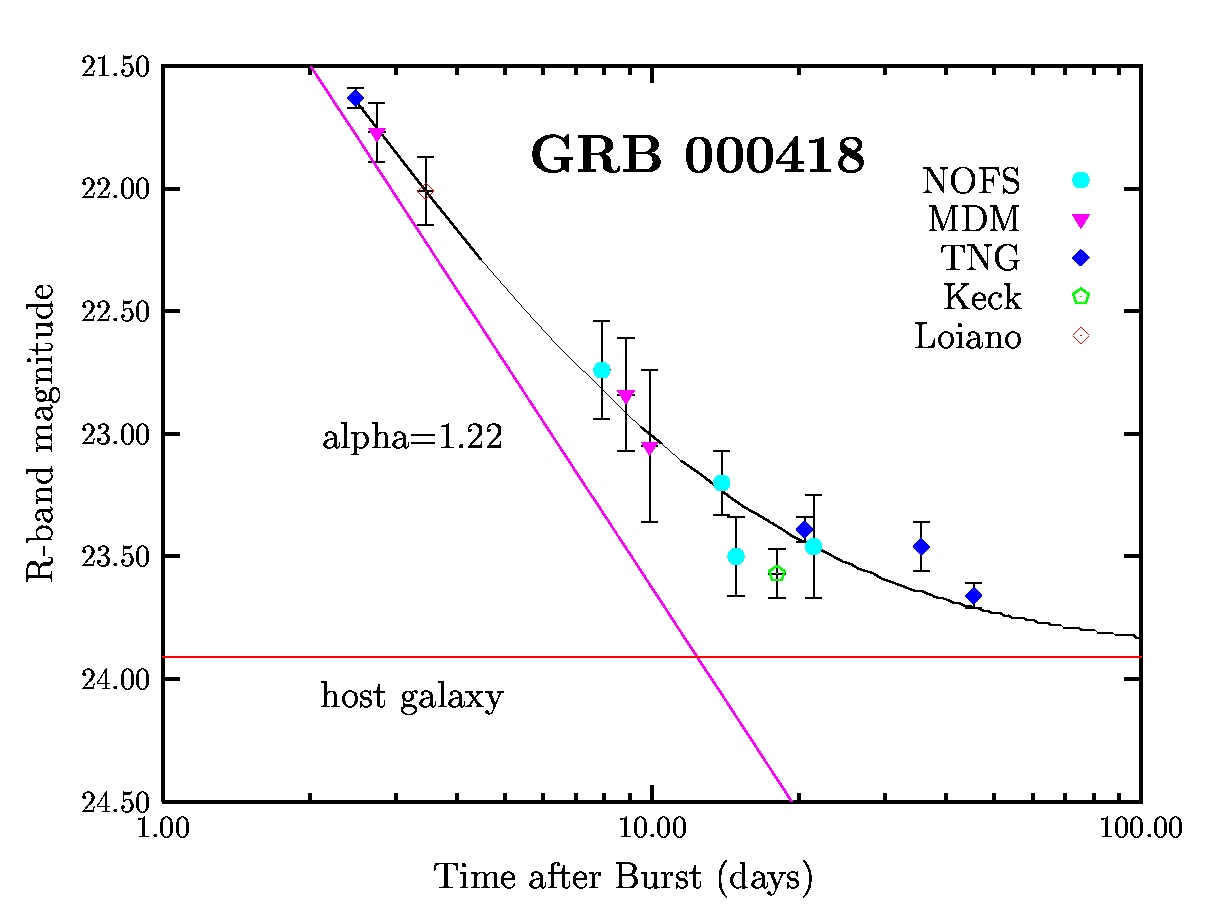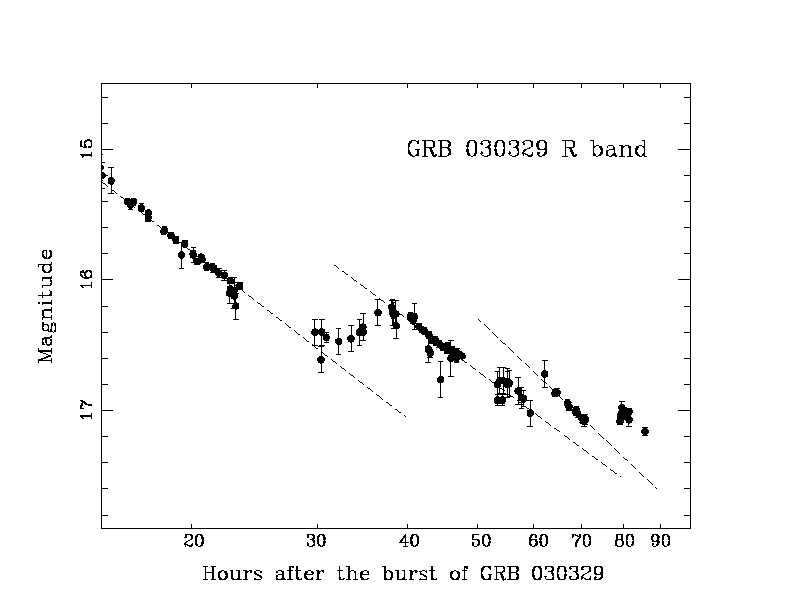Gamma-Ray Burst behavior can be divided into two primary phases. The
"prompt emission" consists of the outburst of radiation that is
defined as the burst proper. It is primarily high-energy radiation,
and usually lasts less than a minute. As the energetics of the burst
mechanism slow down and diffuse, the system cools and has less energy
available for radiation. Hence, at later times, the radiation from
the burst is observed in X-rays, optical, infrared, and even radio.
This decay can take days, weeks, even months, depending on how bright
the source is, and how sensitive your telescope is. The fading,
lower-energy phase of the burst is called the "afterglow".
A burst:

An afterglow:

Of course, there is more going on than simple cooling. The brightest
afterglow ever discovered (because it was from one of the closest GRBs
ever observered: GRB 030329) showed multiple episodes of
rebrightening, indicating that more complex phenomena are occuring.

Close this window



